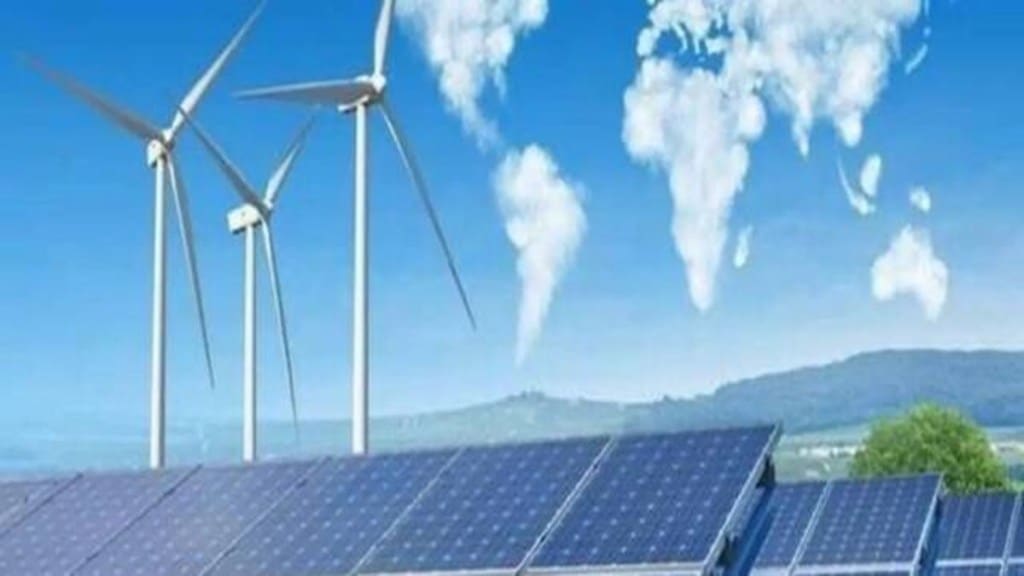By Manish Gupta
By 2032, India plans to have two-third of its power capacity in the renewable sector. To get there , we need to overcome some limitations that clean energy poses, such as intermittency and integration with the grid. Only with investments in technology and efficient execution can clean energy meet half of India’s targeted power needs. Manish Gupta delves into the issues.
What is renewable energy?
RE is energy derived from naturally replenishable or practically inexhaustible sources. These energy sources have a much lower adverse impact on climate change compared to fossil fuels like coal, oil and even natural gas. The RE segment includes solar, wind, hydro, biomass, geothermal and ocean energy. While hydrogen energy is renewable, fossil fuels are needed to produce hydrogen fuel. Key benefits of RE are environment protection, unlimited resource availability, energy security and cost competitiveness. The major challenges are intermittency, geographic limitations, high initial costs and integration issues. The global RE market size was valued at $1 trillion in 2022 and is projected to reach $2 trillion by 2030 at a CAGR of nearly 10%.
Also read: Power Min asks imported coal-based plants to run at full capacity till Sept 30
Power scenario in India
India is the third largest energy consuming country in the world. It stands fourth globally in RE installed capacity (including large hydro). India plans to set up 596 GW of RE capacity by 2032, or 66% of the total capacity (900 GW), as per the National Electricity Plan 2022-2032. Today, India’s installed non-fossil fuel (RE, large hydro and nuclear) capacity stands at 180 GW, about 43% of the total capacity. However, coal generates 78% of the power produced in India, RE 12%, large hydro 7% and nuclear 3%. Several steps have been taken to promote RE: 100% FDI, ultra mega RE parks, new transmission lines, standard bidding and payment guidelines, technical and skilling support, waivers and sops.
Intermittency and integration issues
Some RE sources like solar and wind energy, that depend on weather conditions, are intermittent in nature. This makes it challenging to ensure a stable and constant power supply to the grid. Besides, integrating RE sources into the existing grid infrastructure can be complex as the grid was primarily designed for centralised power generation from fossil fuel plants unlike the distributed renewable sources. As RE sources are often located in remote areas, the cost of building new transmission lines is a barrier. Challenges arise in terms of matching demand and supply, maintaining grid stability, and managing voltage and frequency fluctuations. The renewable sources are slow in matching the rapid fluctuations in power demand during peak periods. While energy storage systems like batteries can help mitigate intermittency issues, cost, scalability and technical constraints still remain.
Most solar and wind plants are in the north-west, west, south and coastal states such as Rajasthan, Gujarat, Maharashtra, Karnataka, Andhra Pradesh and Tamil Nadu. However, there are connectivity issues in evacuating power from these locations to population centres with high electricity demand. Green energy corridors, with an outlay of `25,000 crore, are being set up to connect the generating zones to the state and national grid. An optimistic view is that in the next 3-5 years, the bulk of transmission issues will be sorted out. On demand-supply mismatches, storage is needed, whether pumped hydro or battery storage.
Also read: Assam government launches its Credit Guarantee Scheme for MSMEs
As per NEP, pumped storage power (PSP) plants are projected to be close to 27 GW and battery energy storage system (BESS) more than 47 GW by 2032. JSW Energy, Greenko and Torrent Power are some big companies working on these technologies.
Besides, thermal plants need to be more flexible. The government should reduce the minimum technical plant load factor (PLF) from 55% to 40% so that it can be ramped up when renewable energy capacity is not enough. Gas-based power plants can be a balancing source.

